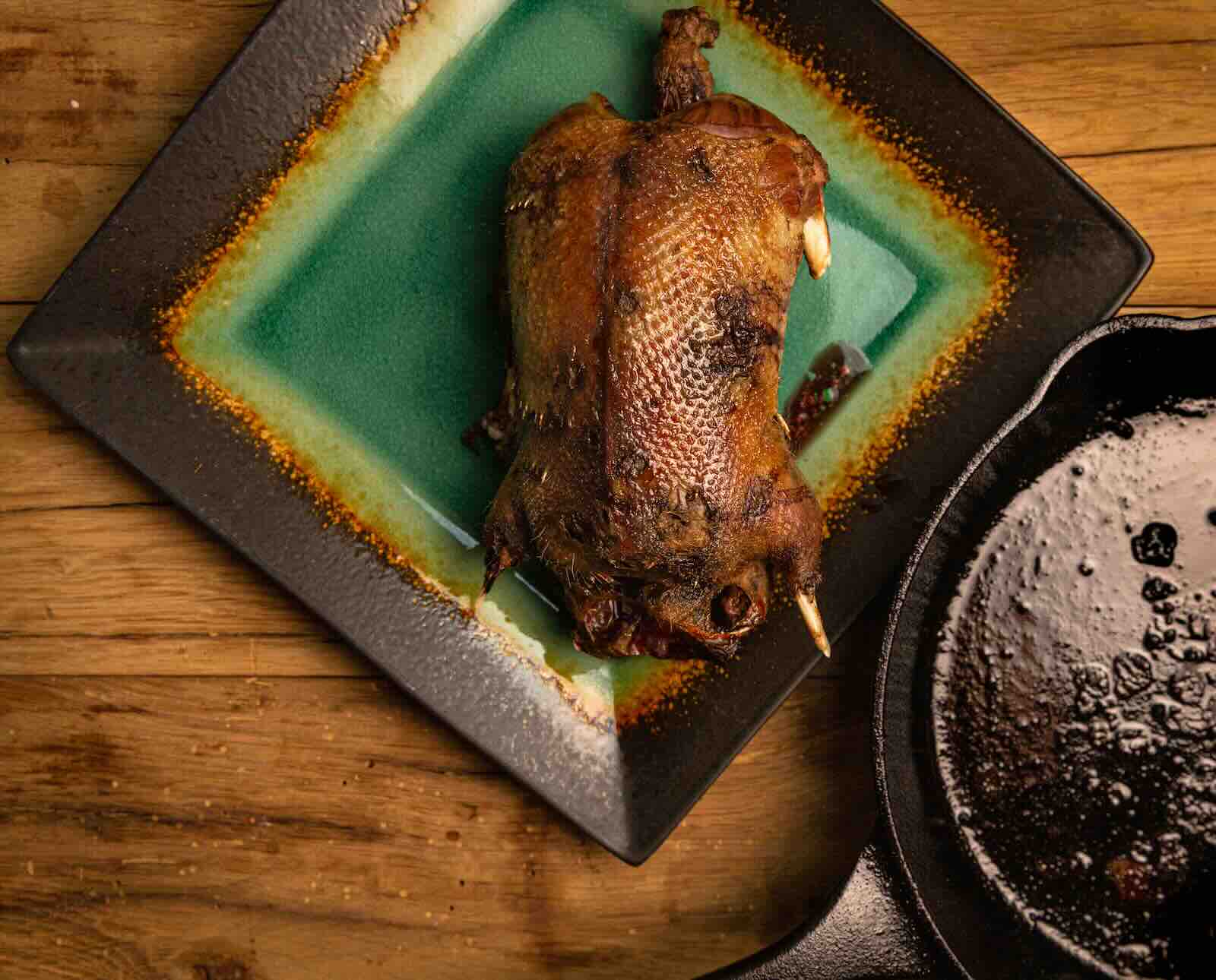Brine the duck in the cold water and kosher salt for a few hours. Rinse, then allow the bird to sit in the fridge uncovered with ample airflow for several hours. When roasted, dry duck has very crispy skin.
Hours ahead of roasting, cut the shape of the duck breast out of two navel oranges. Freeze those pieces. With the cut-out pieces, trim off the rind and freeze those as well. You may wish to do this with two sets of two oranges; I’ll explain why here shortly.
When ready to roast, pre-heat your oven to 275 F. Cut the root vegetables or celery into planks, and arrange them in your skillet so the duck can roast on top of them. Alternatively, if you have a dehydrator, you can use the same stainless-steel mesh trays. Set the duck breast-side up on the vegetables or tray.
Stuff the duck’s cavity with frozen orange slices. Place whole, cut-out frozen oranges on top of the breasts. You may need to secure them with toothpicks to prevent them from sliding off.
Roast for at least 50 minutes. You may wish to swap out the frozen oranges at this point and roast for another 30. Be careful not to burn the wings or legs.
Once the sides of the duck are dark golden brown, remove the oranges and allow the duck to roast for 5 minutes. Then, turn on the broiler and broil for another 5 to 10 minutes to crisp up the skin.
Check the duck’s temperature and verify that the breasts are about 140 F and wings and legs are closer to 190 F. Even if the breasts are done, it still may be necessary to throw the wings and legs back into the oven to tenderize.
Finish this dish up by making a glaze from fat and orange drippings. Just add a little bit of honey to the skillet after removing the duck and its roasting vegetables or tray. Then, mix the honey with the drippings until combined, and pour over the roasted duck.
